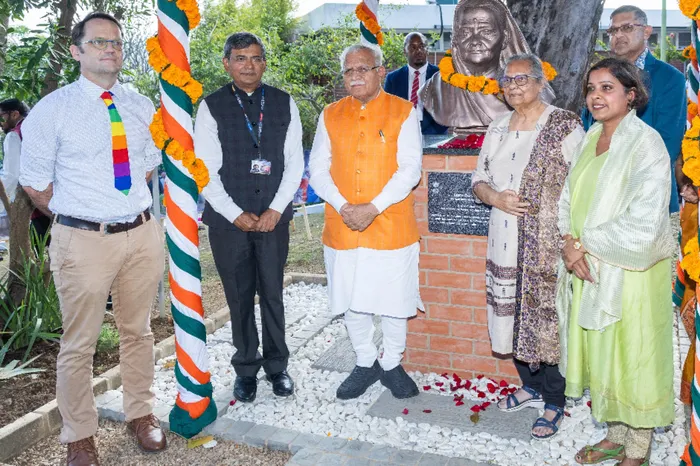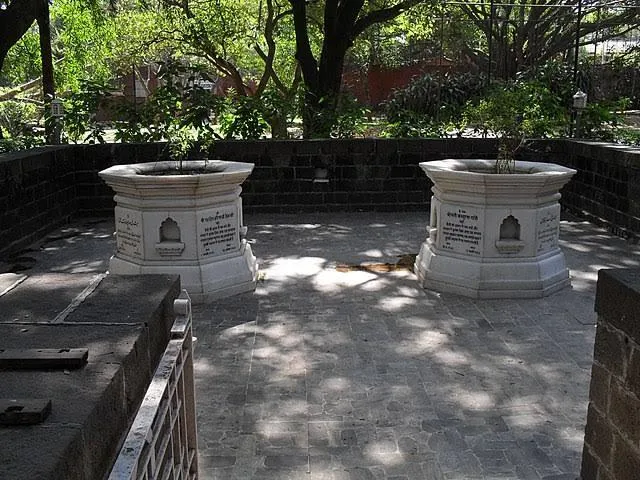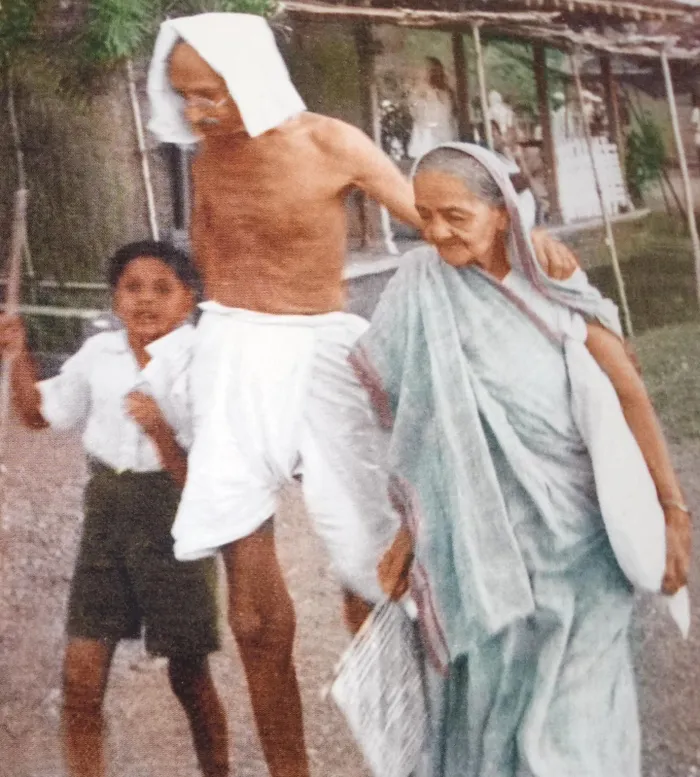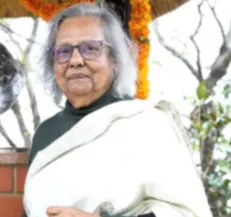Celebrating Kasturba Gandhi: the silent strength behind Mahatma’s movement
Unsung hero of nonviolence and equality

Indian Union Minister of Power and Housing and Urban Affairs, Shri Manohar Lal Khattar, third from left, unveiled the bust of Kasturba Gandhi, the wife of Mahatma Gandhi, at the Phoenix Gandhi Settlement on Friday. With him are, Lukas Marthinus Meyer, the KZN MEC for Public Works and Infrastructure; Prabhat Kumar, the High Commissioner of India to South Africa; Ela Gandhi, the grand daughter of Mahatma Gandhi; Dr. Thelma John, the Consul General of India in Durban; and Narend Singh, at the back, the Deputy Minister of Fisheries, Forestry and Environment.
Image: Rajesh Jantilal
The bust of Kasturba Gandhi, the wife of Mahatma Gandhi, was unveiled on Friday at the Phoenix Settlement in Inanda. The event was hosted by the Consulate General of India, Durban; and the Phoenix Settlement Trust and Gandhi Development Trust. Ela Gandhi, Kasturba's granddaughter, said the unsung heroine's courage and compassion were pivotal in shaping the philosophy of nonviolence alongside her husband, Mahatma Gandhi.
MAHATMA Gandhi is known all over the world for his development of nonviolent protest action against injustice, Satyagraha, and for the development of a culture of nonviolence, Sarvodaya. In both these activities his close companion and helpmate was Kasturba.
Kasturba was a strong person in her own right and while she stood with Gandhiji in his various campaigns, she also helped to formulate them and develop the principles on which their campaigns should be run.
She was simple yet intelligent and had a deep understanding of common human values, which she practised in her daily life. Her courage and wisdom have been written about by Gandhiji himself and could be seen in her various actions, including her willingness to undergo surgery without an anesthetic or chloroform, as her fragile condition could not tolerate an anesthetic.
Gandhiji acknowledged in his autobiography that he learnt the art of nonviolence from Kasturba.

The tombstones of Mahadevbhai (Mahadev Desai, Mahatma Gandhi's personal secretary, scholar, and freedom fighter, who chronicled Gandhi's life and activities) and Kasturba Gandhi in Agakhan Palace.
Image: Supplied
She died on the evening of February 22, 1944, at the Agakhan Palace where she was detained alongside Gandhiji and many others on August 9, 1942, after the call for quit India was made, on August 8, 1942. She was cremated in this prison and her grave is in the courtyard of this palace in Pune India.
Kasturba, was born, it is estimated, on April 22, 1869, to Gokuldas and Vrajkunwar Kapadia. As in those days, births, more especially of girls, were not registered and so there is no official record of her birth date. Gokuldas Kapadia was a businessman dealing in cotton and grains and exporting them to various parts of the world. At one time he served as Mayor of Porbandar.
The two families were neighbours and good friends. The marriage between Kasturba and Gandhiji was arranged by the families and they were married at a tender age of 13. Kastur, as she was called, had two brothers - one older and one younger - and grew up as the only daughter of doting and wealthy parents.
Kastur and Mohandas' early life was spent in the latter's parental home in Rajkot where the Gandhi family had moved. In his autobiography, Gandhi writes that he was a jealous husband and tried to prohibit his wife from going out with other members of his family on visits to the temple or other visitations. But Kastur, he said, was not one to obey such unreasonable demands and defied him.

Mahatma and Kasturba Gandhi with their grandson, Kahanadas Gandhi.
Image: Supplied
Their family comprised four sons.
Harilal born in 1888 just before Gandhiji left for London, and Manilal born in 1892 before he left for South Africa in 1893. The other two sons, Devdas and Ramdas, were born in South Africa.
Gandhiji wrote in his autobiography that he was haunted by fear of ghosts, thieves and serpents and above all, of darkness, but he wrote Kastur had no such fears. He learnt to overcome these fears from his nanny Rambha and later Kastur his young and spirited wife.
It was in South Africa that there was a dramatic change in the lives and thinking of both Kasturba and Gandhiji. The humiliation of racial discrimination, the witnessing of how people’s dignity was being trampled by the cruel treatment of indentured workers and the brutality against the African people drove Gandhiji and Kasturba to rethink the meaning of their lives and their calling.
Kasturba was reluctant to renunciate completely because of fears for the security of her children but was soon convinced by Gandhiji and she too willingly embraced simplicity and the notion of oneness of all humanity. The Gandhis together with their friends began to experiment on ways to conserve soil and water at the Phoenix Settlement, which was the first ashram they set up in Durban in 1904.
They experimented on communal living and building relationships across gender, class, caste and creed. They further learnt compassion and caring for the sick during the outbreak of plague in Johannesburg where Gandhiji Kasturba and their friends set up emergency nursing services for those afflicted by the plague. At the Phoenix Settlement and later at Tolstoy Farm, Gandhiji began training Satyagrahis.
Kasurba in 1913 volunteered to participate in the defiance campaign in protest against a court ruling, which outlawed traditional marriages outside the Christian faith. At a time when women around the world did not have a vote and their status was at an all time low, Kasturba and her companions and from Johannesburg Valliamma and her companions defied the border laws at Volksrust and courted imprisonment with hard labour. They were held in the Pietermaritzburg Prison where there is now an exhibition and a number of developmental programmes.
In paying tribute to Kasturba people who had lived with her in the various ashrams, particularly at the Phoenix Settlement, Seva gram Ashram and Sabarmati Ashram, wrote about the powerful, gentle and compassionate personality of Kasturba and how she was able to keep them together, despite some challenges and disagreements, which were overcome once she understood the importance of the principle of love of all humanity.
The tributes were glowing and indicative of the influence and quiet leadership she was able to provide to the residents of the ashrams where she lived immersing herself within these communities. We are extremely glad that at last her importance is being celebrated in South Africa by the inauguration of a bust of Kasturba facing Gandhiji’s bust and next to their home named Sarvodaya, on Friday, 121 years after the establishment of the Phoenix Settlement.
It was on this sacred land that both Gandhiji and Kasturba developed their noble ideals and their strength and resilience to conduct the struggle against colonial oppression and social injustices. Kasturba fully participated in the struggle for 40 years breathing her last breath in prison, refusing to accept concessional release unless all the political prisoners were released.

Ela Gandhi
Image: File
Ela Gandhi is the chairperson of the Gandhi Development and Phoenix Settlement Trusts.
** The views expressed do not necessarily reflect the views of IOL or Independent Media.
Related Topics: